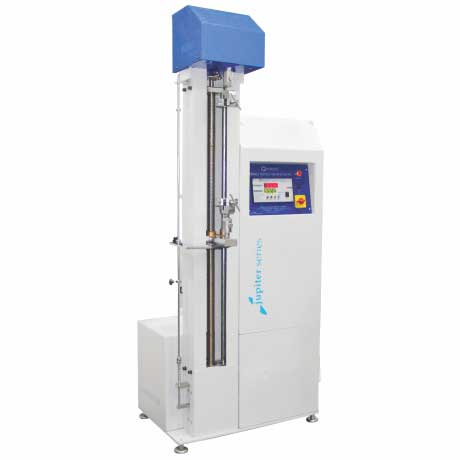When we are focussing on the global market the quality of the packaging has to be top-notch. The packaging quality should not be restricted for the locals either. Both the local and global markets deserve excellent quality packaged goods as it helps the products to remain intact and in a good condition. Products you purchase, including food, consumer goods, and industrial products, must be packaged and sealed in secure packaging that is strong enough to withstand shipping and delivery. The paper or cardboard used for packaging must be able to withstand changes in temperature and pressure, as well as variations in shipping, in order to reach the customer without damage. There are several factors used to calculate the strength and quality of the corrugated board used in packaging, burst rate, and strength being one of them.
What is a bursting strength tester?
The Bursting Strength Tester is a reliable indicator of the strength and performance of various materials. The Bursting strength testers are ideally used for testing a wide variety of materials to determine their quality, strength, and performance. The process is pretty simple. It is widely used in industries and organizations, and it has established itself as a proven and reliable device.
This tester can easily measure the explosion protection of various products such as paper, cardboard, and corrugated board. This tester works on the basic principle that the product will expand when hydrostatic pressure will be applied to it.
Features of Bursting Strength Tester
• Accurate and reliable machine
• Sturdy texture.
• Improves performance and eliminates manual error.
• Rubber diaphragms and hydraulic fluid bottles are a part of the machine
• All replaceable parts are available.
Importance of Bursting Strength Tester
This tester is mainly used in the packaging industry to calculate the strength and quality of various packaging materials such as paper, cardboard, fiberboard, and cardboard. Properly testing materials for burst strength allows manufacturers to easily ensure the high quality of the packaging they offer their customers.
Tensile Tester
Tensile testing, is a destructive engineering and materials science test in which controlled stress is applied to a specimen until it fails completely. This test is done by using of a tensile tester.
This is one of the widely used mechanical testing techniques. It is used to find out how strong a material is and how far it can stretch before breaking. This test method is used to determine yield strength, tensile strength, ductility, work hardening properties, modulus of elasticity, and Poisson’s ratio.
Test Properties
Yield Strength
Yield strength is the point at which plastic deformation occurs under load. This is determined during the test over the measured measurement length using a so-called extensometer. The device is either a mechanical clip-on or a video device with limited contact. Test at high temperature.
Tensile Strength (UTS)
UTS are the maximum load a specimen will experience during testing. This may differ from the ultimate strength of the sample, depending on whether the sample is brittle, ductile, or both. These material properties can change due to environmental conditions such as extreme heat or cold.
Ductility
Ductility refers to elongation in tensile tests. Elongation is calculated by dividing the maximum gauge length by the original gauge length.
Work Hardening
How it is hardened under plastic deformation.
Young’s Modulus
Young’s modulus, also known as Young’s modulus, measures the stiffness of a specimen. This allows the material to return to its original state when the stress is removed. When a material is stretched beyond its original length and permanent deformation occurs, Hooke’s Law no longer applies. This is called the elastic or proportional limit (also called the yield point).











